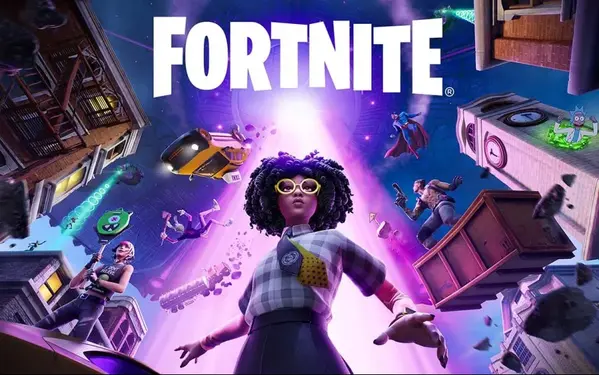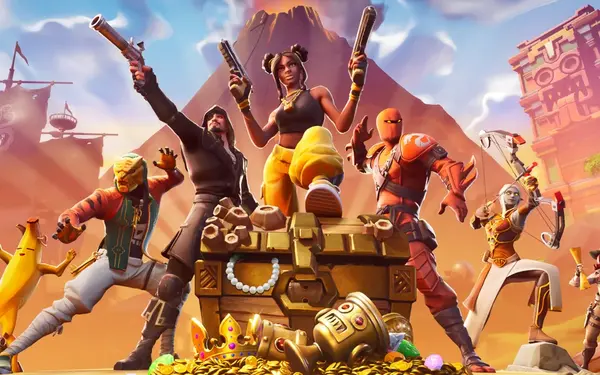Advertisement
Popular Now
Introduction
Fortnite, developed by Epic Games, has revolutionized the gaming industry with its battle royale format and engaging gameplay. However, beneath the surface of its vibrant world lies a persistent and often overlooked issue: the fragility of its in-game economy. This article explores the nuances of Fortnite’s economic design, analyzing its impact on player experience and the long-term sustainability of the game.
The Early Days: A Balanced Economy
In Fortnite’s early days, the in-game economy was relatively simple and balanced.Limited Resources and Fair Distribution
- Players relied on harvesting materials like wood, stone, and metal to build structures.
- Resources were abundant but required effort to collect, fostering fair competition.
Cosmetic Purchases Only
- The introduction of V-Bucks allowed players to purchase cosmetic items without affecting gameplay.
- This system maintained a level playing field while generating revenue for Epic Games.
The Introduction of Microtransactions
The transition from a balanced economy to one heavily reliant on microtransactions marked a significant shift in Fortnite’s economic model.Rise of the Battle Pass System
- The Battle Pass introduced tiered rewards, incentivizing players to spend more time (and money) in-game.
- Players felt compelled to purchase V-Bucks to unlock exclusive skins and items.
Skewed Player Dynamics
- Wealthier players could showcase rare cosmetics, creating a divide between paying and non-paying players.
The Impact of Limited-Time Events
Fortnite’s limited-time events often disrupt the in-game economy.Short-Term Inflation
- Events like Fortnite’s collaboration with Marvel introduced exclusive items, driving up demand.
- Prices of event-specific items often left many players unable to participate fully.
Resource Allocation Challenges
- Players’ focus shifted from harvesting materials to hoarding event items.
- The competitive balance of matches was affected as some players prioritized economic gains over gameplay.
The Role of Cosmetic Scarcity
Scarcity plays a critical role in Fortnite’s economic strategy, but it has its drawbacks.Artificial Rarity
- Epic Games frequently rotates items in and out of the shop to create a sense of urgency.
- Players often regret missing out on rare skins, leading to impulsive spending.
FOMO (Fear of Missing Out)
- The psychological impact of FOMO leads to unhealthy spending habits.
- Younger players, in particular, are more susceptible to these tactics.

Challenges with Player-Driven Markets
Fortnite’s lack of a player-driven market creates unique economic challenges.No Player-to-Player Trading
- Unlike games with player-driven economies, Fortnite does not allow trading of items or resources.
- This limits economic interaction between players and stifles market innovation.
Dependence on Developer Decisions
- Epic Games has complete control over the pricing and availability of items.
- Players have little agency in shaping the in-game economy.
The Role of Competitive Play
Fortnite’s competitive scene has both positive and negative effects on the in-game economy.Prize Pools and Sponsorships
- High-stakes tournaments attract professional players and generate revenue.
- The economic focus shifts to elite players, leaving casual players sidelined.
Increased Entry Barriers
- Aspiring competitive players often feel pressured to purchase the latest skins and emotes to fit in.
- The cost of staying relevant in competitive play adds financial strain.
Economic Inequality Among Players
Fortnite’s economic model exacerbates inequality among its player base.Pay-to-Win Perception
- While Fortnite’s items are cosmetic, the social pressure to own them can affect gameplay.
- Players without popular skins may face exclusion or ridicule.
Regional Disparities
- V-Buck pricing varies by region, making items less accessible to players in lower-income areas.
The Sustainability Question
Is Fortnite’s economy sustainable in the long run?Player Retention Challenges
- Frequent updates and new items keep players engaged but can lead to burnout.
- The constant push for microtransactions risks alienating loyal players.
Competitive Landscape
- Rival games with more player-friendly economies may draw players away from Fortnite.
- Sustaining interest requires balancing monetization with player satisfaction.
Possible Solutions
Addressing the fragility of Fortnite’s economy requires a multi-faceted approach.Introducing Player Trading
- Allowing limited player-to-player trading could foster a more dynamic economy.
- Trading could incentivize engagement without relying solely on microtransactions.
Reducing FOMO Tactics
- Offering more accessible ways to obtain rare items could alleviate pressure on players.
- Implementing a rotating reward system might enhance fairness.
Enhancing Transparency
- Clear communication about pricing and availability can build trust.
- Transparency in economic decisions can help players feel valued.


















